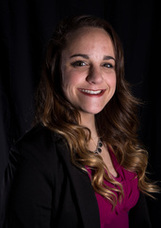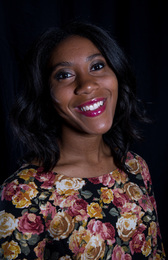|
By Stephanie Smith
I’ve got a secret worth sharing: It’s possible to survive Public Relations Case Studies. As bold as that statement may be, I’ll make even bolder declarations: It’s possible to get something out of it and even remember it fondly. OK. I may be writing this after one too many Coke Zeros, but hear me out, please. I didn’t say it was easy to get through PR Case Studies, I didn’t say it was like a day at Disney World and I didn’t say you might not scream, cry, yawn (a lot), curse the moon, throw darts at my photo and throw the Ron Smith textbook (and your communication plan) across the room a couple of times. But you can survive. And I’m here to tell you how. At least, I’m here to tell you how students have survived my section of PR Case Studies (and I challenge my colleagues to offer their thoughts, too). I offer six survival tips. Do these six things – and add a whole lot of coffee, ice cream, TV breaks and an occasional adult beverage – and it will all work out. I promise. Survival Tip 1: Read I know, It’s unfair. But yes, you have to read. Specifically, you have to read the assigned portions of Planning for Public Relations (our textbook). You have to read all the case studies (spoiler alert: That’s how this class got its name) and yes, you have to read about current events (ouch, right?). Oh, and while you’re on this reading kick, throw in the syllabus and the case study project outline, too. Survival Tip 2: Show Up. Super unfair, I know. I really wish it counted if you were with us in spirit, but I actually need your physical presence, not just your aura or avatar. Next: Show up prepared – prepared to discuss what you’ve read (see tip 1), prepared to think critically, prepared to debate ideas, prepared to take a stand. You can’t hide in my class: I will find you and require you to participate. Public Relations isn’t a spectator sport. Survival Tip 3: Team is Life. If you insist on getting a tattoo, here’s a good one: “Team = Life.” As soon as I assign you to a team, I require you to sit with your team. You will work with your team, breathe with your team, dream, plan and scheme with your team. If you are like other PR Case Studies students, you might cry with your team, fall in and out of love with your team, and plot my demise with your team. You will also evaluate each member of your team—and they will evaluate you. Here’s the bottom line: 45 percent of your grade depends on teamwork. And here’s the bigger point: Success in professional life very often depends on being a good, ethical team player. So play well with each other (and don’t run with scissors). Survival Tip 4: Do the Work. Yep. You knew this part was coming, right? You are going to write three essays all by your lonesome self. You are going to research and write three phases of a communication plan with your team. You are going to earn lots of easy points by taking eight online quizzes. There is no substitute for rolling up your sleeves, showing off that new “Team=Life” tattoo and doing the work. If you don’t hold up your end of the work on your team, well…see tip 3 (the part about peer evaluation). Survival Tip 5: Learn to write well. I know: You already write well. Your goal is to write better. You will get lots of practice. Because practice makes you a better writer (it makes me a better writer, too). You must proofread your work; I deduct points for grammar, usage and punctuation errors. I go crazy when you make spelling errors. Always submit your best draft, not your first draft. Survival Tip 6: Fall in love with your client. Hey, you’ve got room for another tattoo, and “I (heart) My Client” is a good choice. Yes, in my section, I assign clients (always from Kent State). And students don’t always love the client I give them. But if you will immerse yourself in your client’s challenges and aspirations, you will actually begin to care about what happens to your client. You begin to want to do really good work for your client. The best PR Case Studies students learn how to advocate for their clients. They talk incessantly to their roommates, bar-mates, parents and significant others about their clients. And when students really fall in love with their clients, they start arguing with me about what is best for their client. I love that, because over the course of 15 weeks together, I fall in love with your clients, too. Oh, and one more thing: Over the course of our 15 weeks together, I fall in love with you. It really does matter to me and to every single member of this faculty that you do well, that you learn the basics of a PR campaign and that you walk away really proud of the work you’ve done. Stephanie Smith is an assistant professor at Kent State University. Contact her at [email protected].
0 Comments
 By Alyse Rohloff Ethics – a one credit class jam packed with so many philosophies and decision-making models, you’ll walk out an ethical superstar. This class is taught by one of our #PRKent favorites, Tim Roberts. To make things even better, the class is only five weeks long (that’s 1/3 of a semester!) Here are some quick tips on Ethics:
You know you’re getting old once you’ve gotten to Law. In most cases, you have to take Law and Campaigns and then, that diploma will be in your hands. Law is a three credit class taught by (you guessed it) Tim Roberts. Tim really puts a lot into this class and truly shows how well he understands law. And trust me, Tim will make sure you walk out of this class knowing the 1st and 14th Amendment like the back of your hand. Here are some quick tips for Law:
While Tim is an amazing professor, who loves law and ethics almost as much as he does The Real Housewives, he does have a couple quirks that you may want to know before taking his class:
Alyse is a senior public relations major and is PRSSA Kent's intercampus liaison. Contact her at [email protected].  By Gabrielle Gentile PR Publications is a classes that teaches you the fundamentals of design and how design applies to PR professionals. Through this class you learn the basics of several of the Adobe programs like Photoshop, InDesign and Illustrator. This class is very project based, so as the class moves throughout the semester so does the intensity of each project. With each project you are able to choose a client of your choice and develop marketing materials according to project guidelines and the specific needs of your company or client. As I mentioned, the class is very project based with a few exams on design principles intertwined throughout, but don’t let a heavy project load scare you. This class is actually pretty laid back and you are given a lot of class time to work on projects. My advice for not just surviving this class, but passing with an A: 1. Take advantage of class time Most of your grade in this class is based off your design projects. That being said you are given a ton of time in class to work on the projects. I know it’s easier said than done, but don’t waste this time. If you take advantage of class time you will be able to complete most projects in class or at least come very close to completion. Having to spend very little time outside of class on homework and projects is always a plus in my book. 2. Take notes Taking notes in this class is going to seriously make your life easier. If you’re anything like me entering this class, you are relatively new to design and Adobe workshop. Being able to navigate InDesign and Photoshop is vital to completing your projects. Your professor will show you how to use the programs during class, but if you take notes on how to navigate through the program you’ll have something to reference back to when you start your project. These programs are not self-intuitive. Unless you are trained on them and have a lot of experience, you are going to need your own notes on how to do the all the different functions. Plus, if you have your own notes then you cut down on the time spend waiting for the professor to come over to you. Keep this in mind because there is only one professor and 25-ish students all with little experience and lots of questions. 3. Ask questions That being said, don’t be afraid to ask questions. Your professor is highly trained in these programs and has a lot of experience developing PR materials just like the projects you’re working on. If you have a question about design or how to use the program, ask because once you leave class you are on your own. 4. Understand the benefit of this class and take it seriously It may not seem like it now, but this class is really important for developing skills you’ll need once you graduate. More and more companies are relying on PR professionals to be comfortable with design and know how to use the programs. If you take this class seriously and put a lot of effort into your projects you are not only going to leave the class with an A, but you will have a lot of design pieces that you can add to a portfolio and show during an interview. In addition, if you put the effort into really learning Photoshop and InDesign you can put that on your resume. Gabrielle is a senior public relations major and is PRSSA Kent's vice president of public relations. Contact her at [email protected].  By Meghan McDonald Research and Measurement in Advertising and Public Relations is a course designed for you to understand and practice how to use research to gain information about your publics and how to apply that information. You learn how to break down groups of people by their demographics and psychographics (don’t worry, you learn what both of those words mean too) and how to use that information to your advantage. The title and description of this course may sound intimidating, but it really isn’t that bad, I promise! This course turned out to be one of my favorite courses I have taken so far just because of how many skills it taught me that I have transitioned into my other courses. In this course you will have to do a couple big projects that will require you to send out surveys and conduct questionnaires on whichever topic your professor has assigned to you. Try your best to get a topic on something you are remotely interested in because it will make you much more willing to do the work, trust me. I was lucky enough to be in a class where the professor made all of our projects about music streaming services so the information was actually relatable and interesting for me! To succeed in this course:
Meghan McDonald is a junior public relations major and is PRSSA Kent's secretary. Contact her at [email protected].  By Brittney Prather OKAY so by the titles of Media, Power and Culture (MPC) and Multimedia Techniques, they sound complicated, but in reality they are really not that bad! MPC was essentially about what mass communications is including the background about radio, newspaper, what ethics is and the importance of it in the media, and so much more. For the most part, it was more about learning than it was about tedious assignments for busy work. So the best advice is to really just show up and pay attention and when the assignments come along, really try and apply what you’ve learned! Now for Multimedia Techniques. This class is as fun as you make it especially if you are lucky enough to have David Alan Foster! It is a class that focuses on, as the title of the class says, multimedia techniques. This means photography, video, newspapers, and even social media. I would say the most difficult part of the class was the three hour labs, but fear not, if you bring snacks, it really does help the class go by quicker, but don’t forget to focus when eating the three hours away! Another difficult aspect would be that if you are not quite familiar with how to put together video or you feel uncomfortable interviewing random people. There are ways to get through this. If you have questions, don’t be afraid to ask your professor for help, they will be willing to help with any difficulties you are having. As for talking to random people, it can be nerve wracking, but with practice it will get better, I promise! New classes are always intimidating, but if you go into these classes with an open mind and willingness to break out of your comfort zone, you will do great! Also, don't forget the snacks! To succeed in these classes:
Brittney Prather is a junior public relations major and is PRSSA Kent's vice president of membership. Contact her at [email protected]. |
Archives
February 2024
Categories
All
|
 RSS Feed
RSS Feed
